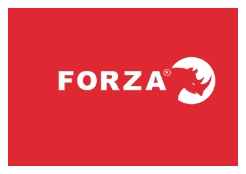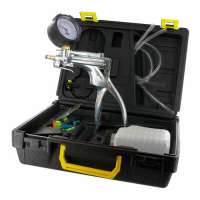FORZA CUTTER HOLDER WITH KEY
The keyway mill holder is an essential tool in milling operations, specially designed to firmly hold milling cutters and ensure efficient power transmission from the machine to the milling cutter.
This type of mill holder is equipped with a keyway, a machined slot that allows the insertion of a key to ensure that the milling cutter does not rotate or shift during the cutting process.
This clamping mechanism is particularly useful in operations where high levels of precision and stability are required.
Keyway mill holders are crucial components in complete 3, 4 and 5-dug heads, allowing for wide versatility and compatibility with different types of milling cutters and milling machines.
Recommendations for use
Make sure the chuck is compatible with the milling machine and milling cutter to be used.
Insert the key correctly into the keyway to ensure a firm hold.
Check that all drivers are properly adjusted and aligned before starting operation.
Perform idle test runs to ensure there is no unwanted movement.
Always wear appropriate personal protective equipment when operating the chuck and router.
Maintenance recommendations
Regular cleaning: After each use, clean the milling cutter holder to remove metal residue or lubricant that may affect its operation.
Periodic Inspection: Check the condition of the keyway and key for any signs of wear or damage that could compromise accuracy.
Proper Lubrication: Apply lubricant to contact surfaces to prevent corrosion and ensure smooth, friction-free operation.
This type of mill holder is equipped with a keyway, a machined slot that allows the insertion of a key to ensure that the milling cutter does not rotate or shift during the cutting process.
This clamping mechanism is particularly useful in operations where high levels of precision and stability are required.
Keyway mill holders are crucial components in complete 3, 4 and 5-dug heads, allowing for wide versatility and compatibility with different types of milling cutters and milling machines.
Recommendations for use
Make sure the chuck is compatible with the milling machine and milling cutter to be used.
Insert the key correctly into the keyway to ensure a firm hold.
Check that all drivers are properly adjusted and aligned before starting operation.
Perform idle test runs to ensure there is no unwanted movement.
Always wear appropriate personal protective equipment when operating the chuck and router.
Maintenance recommendations
Regular cleaning: After each use, clean the milling cutter holder to remove metal residue or lubricant that may affect its operation.
Periodic Inspection: Check the condition of the keyway and key for any signs of wear or damage that could compromise accuracy.
Proper Lubrication: Apply lubricant to contact surfaces to prevent corrosion and ensure smooth, friction-free operation.
Bullet points
- High clamping precision: The keyway design ensures that the cutter is held in its exact position during milling, minimizing any unwanted slippage or movement.
- Compatibility and versatility: Being part of the complete heads with 3, 4 and 5 drivers, this milling cutter holder is compatible with a wide range of milling machines and tools, adapting to various manufacturing needs.
- Improved quality of finishes: Precision in clamping allows for finer and more detailed finishes, which is essential in jobs where accuracy is crucial.
- Reduction of downtime: By minimizing the risk of slippage and errors during milling, the need for adjustments and corrections is reduced, thus optimizing work time.
FORZA CUTTER HOLDER WITH KEY reference list
| Ref. | Weight | Price | Milling Head | Thread diameter | Head | Sparepart | Accessories | Buy |
|---|---|---|---|---|---|---|---|---|
| 714216 | 0.2Kg | 171,00 € | CAFN4 | 16 | CAFN4 |  | ||
| 715216 | 0.3Kg | 183,50 € | CAFN5 | 16 | CAFN5 |  | ||
| 715222 | 0.3Kg | 171,50 € | CAFN5 | 22 | CAFN5 |  |

































































































































































































